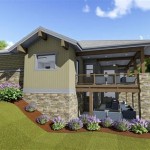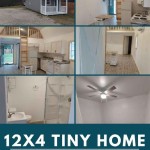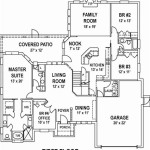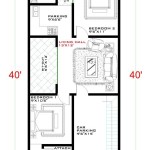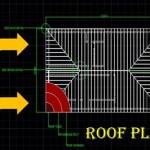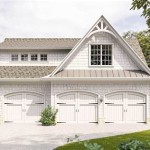Graph Paper for Floor Plans: Apps, Free Printables, and Design Essentials
The creation of floor plans, whether for architectural design, interior decorating, or simple home improvement projects, often begins with the fundamental tool of graph paper. Its pre-defined grid structure provides a framework for accurately representing spatial relationships and dimensions, facilitating the conceptualization and visualization of layouts prior to implementation. While traditional graph paper remains relevant, digital applications and readily available printable templates have broadened the scope and accessibility of this essential design aid.
This article examines the multifaceted world of graph paper utilization for floor plan development, covering digital applications, readily available free printable options, and key considerations for effective design application. It delves into the advantages and limitations of each approach, providing guidance for selecting the most suitable method based on project requirements, user preferences, and access to resources.
The Enduring Utility of Graph Paper in Floor Plan Development
Graph paper's fundamental value lies in its ability to translate proportional measurements onto a two-dimensional surface. Each square on the grid represents a specific unit of measure, allowing designers to accurately depict the size and position of walls, doors, windows, and other architectural elements. This methodical approach minimizes errors in spatial representation, ensuring that the final layout aligns with intended dimensions. The simplicity of the gridded format makes it an ideal tool for initial sketches and conceptual development, enabling users to experiment with different layouts and arrangements before committing to more detailed drawings or digital models.
The tangible nature of graph paper also fosters a more intuitive understanding of spatial relationships. Unlike the often-abstract experience of working with digital software, the act of physically drawing a floor plan on graph paper allows for a more embodied engagement with the design process. This hands-on approach can be particularly beneficial for individuals who are new to floor plan design or who prefer a more tactile method of working. The flexibility to erase, redraw, and annotate directly on the paper allows for iterative refinement and modification, supporting a more dynamic and responsive design process.
Furthermore, graph paper provides a cost-effective and accessible solution for floor plan creation. Unlike specialized architectural software, graph paper is readily available at most stationery stores and online retailers at a relatively low cost. This affordability makes it an attractive option for individuals and small businesses with limited budgets. The simplicity of the tool also eliminates the need for extensive training or technical expertise, enabling users of all skill levels to create basic floor plans with ease. This accessibility democratizes the design process, empowering individuals to take control of their own home improvement projects and spatial planning initiatives.
Digital Floor Plan Applications: Expanding the Design Landscape
While graph paper offers a fundamental approach to floor plan design, digital applications provide a range of advanced features and capabilities that enhance the creation and refinement process. These applications typically incorporate sophisticated drawing tools, pre-designed architectural elements, and accurate measurement systems, enabling users to create highly detailed and professional-looking floor plans. The digital format also facilitates seamless sharing and collaboration, allowing multiple users to access and modify the same plan simultaneously.
Many digital floor plan applications incorporate features such as automatic dimensioning, which calculates and displays the precise measurements of walls, rooms, and other elements. This eliminates the need for manual calculation and reduces the risk of errors. The ability to easily adjust dimensions and proportions within the application allows for iterative design refinement and ensures that the final plan adheres to specific building codes and regulations. Some applications also integrate with building information modeling (BIM) software, allowing users to create three-dimensional models from their floor plans, providing a comprehensive visualization of the finished space.
The availability of pre-designed architectural elements, such as doors, windows, stairs, and furniture, further streamlines the design process. Users can simply drag and drop these elements into their floor plan, eliminating the need to draw them from scratch. Many applications also offer customizable libraries of furniture and fixtures, allowing users to populate their plans with realistic representations of their intended furnishings. This feature enhances the visual appeal of the floor plan and provides a more accurate representation of the final space.
However, digital floor plan applications can present certain challenges. The initial learning curve can be steep for users who are unfamiliar with digital design software. The complexity of the interface and the numerous features may require significant time and effort to master. Furthermore, access to these applications often requires a subscription fee or a one-time purchase, which can be a barrier for some users. The reliance on technology also introduces the risk of software glitches, data loss, and hardware compatibility issues. It is important to carefully evaluate the costs and benefits of digital floor plan applications before committing to a particular platform.
Free Printable Graph Paper: A Cost-Effective and Accessible Solution
For users seeking a budget-friendly and accessible alternative to digital applications, free printable graph paper offers a viable solution. Numerous websites and online resources provide downloadable templates of graph paper in various sizes, grid densities, and formats. These templates can be easily printed on standard printers, providing a readily available drawing surface for floor plan creation. The simplicity of this approach eliminates the need for specialized software or technical expertise, making it an attractive option for individuals with limited resources or technical skills.
The availability of various grid densities allows users to select the most appropriate scale for their floor plan. Smaller grid sizes provide greater accuracy and detail, while larger grid sizes are suitable for sketching and preliminary design work. Some templates also offer pre-formatted layouts with title blocks and dimension lines, providing a structured framework for organizing and presenting the floor plan. The flexibility to choose from a range of template options allows users to customize the graph paper to meet their specific project requirements.
Free printable graph paper also offers a convenient solution for quick sketches and brainstorming sessions. Users can easily print out multiple copies of the template and experiment with different layouts and arrangements without the need for specialized software or equipment. This flexibility is particularly useful for collaborative design projects, where multiple individuals can work together to develop and refine the floor plan. The ability to annotate and modify the printed graph paper directly facilitates a more interactive and responsive design process.
However, free printable graph paper also has limitations. The lack of pre-designed architectural elements and automated dimensioning requires users to manually draw and measure all elements within the floor plan. This can be time-consuming and prone to errors, particularly for complex layouts. The printed format also limits the ability to easily share and collaborate on the floor plan. Users may need to scan or photograph the printed document to share it digitally, which can degrade the image quality and make it difficult to edit.
Key Considerations for Effective Floor Plan Design with Graph Paper
Regardless of whether graph paper is utilized physically or digitally, several key considerations contribute to the effectiveness of the floor plan design process. These considerations encompass the selection of an appropriate scale, the accurate representation of architectural elements, and the clear communication of design intent.
Selecting an appropriate scale is crucial for accurately representing the dimensions of the space. A common scale for floor plans is 1/4 inch equals 1 foot, which allows for sufficient detail while maintaining a manageable size for the drawing. However, the specific scale should be chosen based on the size of the space and the level of detail required. Smaller spaces may benefit from a larger scale, while larger spaces may require a smaller scale to fit the entire layout on a single sheet of paper.
Accurately representing architectural elements, such as walls, doors, windows, and stairs, is essential for creating a realistic and functional floor plan. Walls should be drawn to scale, with appropriate thickness to represent the actual wall construction. Doors and windows should be positioned correctly and drawn with the appropriate swing direction and dimensions. Stairs should be represented with accurate rise and run measurements to ensure that they are safe and functional.
Clear communication of design intent is paramount for ensuring that the floor plan is easily understood by all stakeholders. This includes the use of clear and concise labeling, the consistent application of symbols and conventions, and the provision of detailed dimensioning. The floor plan should also include a title block with information such as the project name, date, and scale. The overall presentation of the floor plan should be neat and organized, enhancing its clarity and readability.

Printable Graph Paper Free Com

Free Printable Graph Paper In Any Color Word Jpg Or Png

Free Printable Graph Paper In Any Color Word Jpg Or Png

Free Printable Graph Paper In Any Color Word Jpg Or Png

Draw Floor Plans Try Smartdraw Free And Easily More

A Super Simple Method For How To Draw Floor Plan Hampton Redesign

Graph Paper Printable Template Customizable Grids For All Your Needs

Free Floor Plan Layout Apps Reviewed Greenhouse Studio

1cm Grid Paper Template Twinkl Teacher Made

How To Draw A Floor Plan Scale Measuring Sketching
Related Posts

